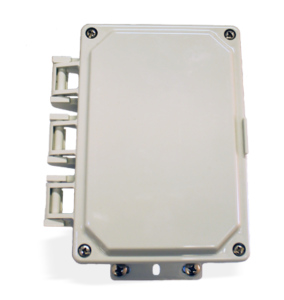 Karrus distributes and integrates the Sensys wireless magnetometer technology.
Karrus distributes and integrates the Sensys wireless magnetometer technology.
These wireless, battery powered sensors enables the rapid, cost-effective and low-maintenance deployment of traffic sensor networks in areas where it is to complicated and too costy to install wired technologies.
Sensys technology is now proven and has many references in the world. It has been evaluated several times by the technical services of several states and benefits of accuarcy similar to inductive loops.
Sensys stations provided by Karrus are natively equipped with the following normalized protocols: TEDI-LCR, DIASER and Modbus.
All Sensys equipment is guaranteed for 5 years to protect yours investments.
–
Magnetometer sensors
The Sensys wireless vehicle detection system uses magnetometers inserted into the roadway to detect the presence and passage of vehicles. The wireless sensors transmit real-time detections to a gateway connected to the traffic management center or traffic light controllers in the field.
The installation of 2 sensors per lane takes 20 min per lane.
–
– Installation–
– Replacement
–
Station
 The gateway is installed in a cabinet using a DIN rail and is connected to up to 2 antennas to retrieve detections from the sensors in the field.
The gateway is installed in a cabinet using a DIN rail and is connected to up to 2 antennas to retrieve detections from the sensors in the field.

Gateways perform the following tasks in a Sensys system:
– Synchronize all the equipment.
– Transmits configuration commands to different devices.
– Collects all the events produced by the sensors and builds the traffic data.
–
–
–
Repeaters

When one or more wireless magnetometer sensors are out of range of the nearest antenna wire to a gateway, one or more repeaters may be used to provide a relay to the out of range sensors. Up to two repeaters operating in tandem can be installed between a sensor and a gateway. To simplify implementation, the repeaters are battery powered and require no wiring.
Along the roadside, the repeater extends the radio coverage and must be placed so that the sensors and the antenna of the gateway or another repeater are in view. The antennas provide a communication cone of 120°, thus allowing optimal flexibility for installation. A repeater can be installed up to 600 meters from another antenna and it must itself be at a maximum distance of 40m from the farthest sensor.
–
–
Integration
The Karrus firmware included with the stations makes it easy to interface the system with central servers available on the market.

The available protocols are :
– DIASER: The Karrus firmware implements the full DIASER standard. This standard has been expanded by Karus to include diagnostic information form the installed sensors and repeaters. This extension is used by Lyon on more than 100 stations.
– LCR: The Karrus firmware implements the TEDI-LCR standard and allows the integration of magnetometer stations on the French market.
– PUSHER: The stations have a TCP push exchange protocol. This feature makes it possible to integrate a Sensys data stream to any system, even embedded ones.
– MODBUS: The Karrus firmware has a Modbus interface to integrate this technology to any controller of the market. This interface is for example used by the City of Paris to regulate lighting in tunnels.
– DO: The DO interface makes it possible to interface the magnetometer system with dry contacts, each contact being controlled according to the occupation of a sensor. Diagnostic information can also be used to control extra dry contacts.
They trust us
DIR Massif Central, DIR Atlantique, DIR Nord-Ouest, DIR Méditerranée, DIR Est, DREAL Bourgogne-Franche-Comté, L2 Marseille, Métropole Grand Lyon, Métropole Montpellier, Métropole Rouen, Métropole Nice Côte d’Azur, Département de l’Isère, Ville de Paris, Collectivité Territoriale de Martinique, Région Réunion, Luxembourg, Villes Santander (Spain).

